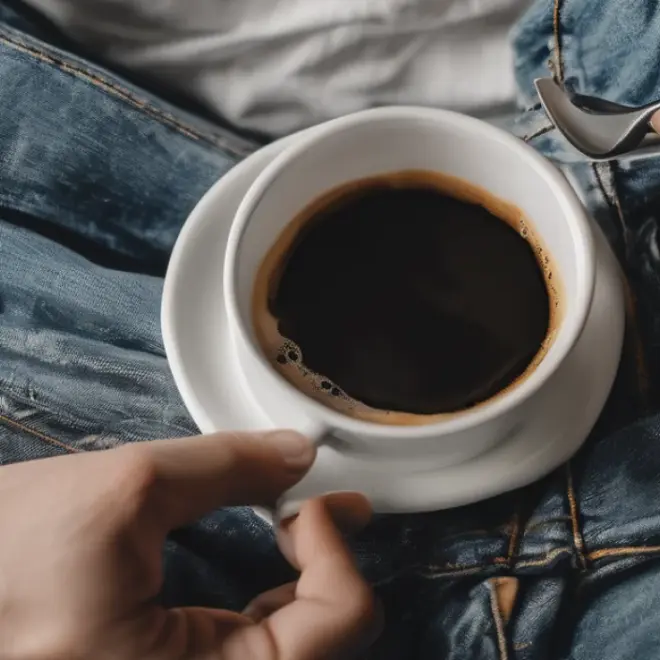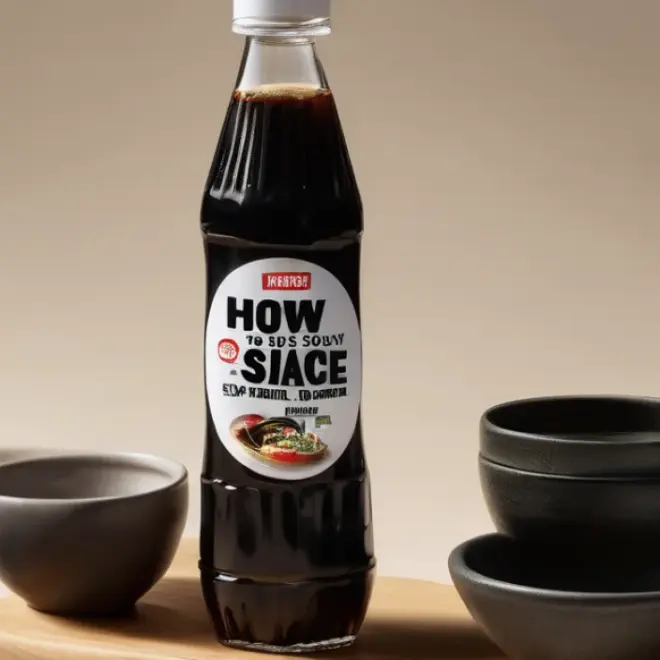To remove coffee from white jeans, act fast! Gently blot the stain with a clean cloth, then pre-treat it with a stain remover or a paste of baking soda and water. Launder as usual, checking for the stain before drying. With prompt action and the right steps, your white jeans can look as good as new.
White jeans are a fashion staple, offering a crisp, clean look that pairs with almost anything. But let’s face it, they can be a magnet for spills, especially that morning coffee. The thought of that dark stain on pristine white fabric can be daunting, but don’t toss them aside yet! Spilled coffee on white jeans doesn’t have to be a permanent disaster. With a few simple, effective techniques, you can tackle these pesky stains and keep your favorite pair looking bright.
This guide will walk you through the do’s and don’ts of coffee stain removal on white denim, from immediate action to deep cleaning. We’ll cover the best methods, tools you likely already have, and how to be sure the stain is gone before you hit the dryer. Get ready to restore your white jeans to their former glory!
Understanding Coffee Stains on Denim

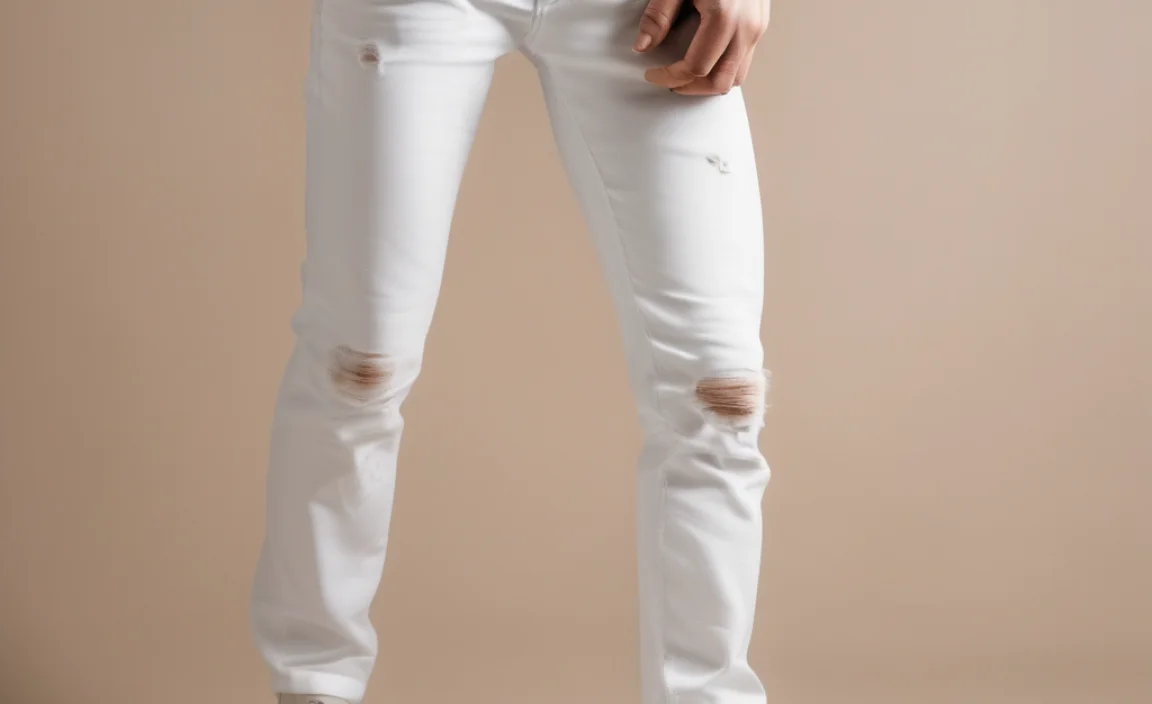
<?php
/ Paul Fiore, Style Weaver, Audience: Everyday people seeking clear, factual fashion care guides, Tone: Clear, Factual, Supportive, Professional yet Approachable /
?>
Coffee is an acidic beverage that can quickly penetrate fabric fibers. When it lands on white denim, the light color makes the stain highly visible. The tannins in coffee are what give it its color, and these compounds can set into the fabric, especially if exposed to heat. The longer a coffee stain sits, the more it bonds with the cotton fibers, making it harder to remove.
White denim, while stylish, is more susceptible to showing stains than darker fabrics. However, it also responds well to many cleaning agents. The key to success is quick intervention and choosing the right cleaning method. Harsh scrubbing can damage the denim fibers, so a gentle yet effective approach is usually best.
What You’ll Need: Essential Stain-Fighting Tools


Before you start, gather these items. Having them ready means you can act fast when a spill happens.
- Clean, white cloths or paper towels
- Cold water
- Liquid laundry detergent
- Baking soda
- White vinegar
- Commercial stain remover (enzyme-based is often effective for organic stains)
- An old toothbrush or soft-bristled brush
- A small bowl or container
Step-by-Step Guide: How to Remove Coffee From White Jeans
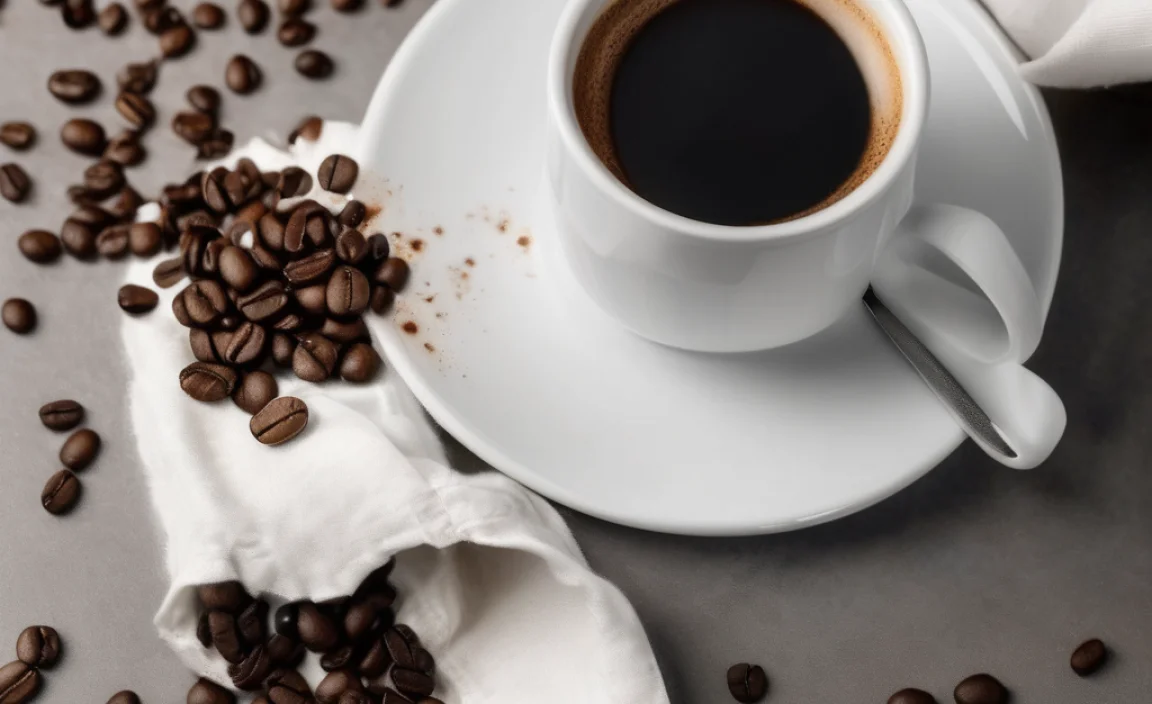

Follow these steps meticulously to give your white jeans the best chance of coming out of this stain-free. Remember, speed is your ally!
-
1. Act Immediately: Blot, Don’t Rub!
As soon as the spill occurs, grab a clean, dry cloth or paper towel. Gently blot the wet stain from the outer edges inward. The goal is to absorb as much of the liquid coffee as possible without spreading it further into the fabric or pushing it deeper into the fibers. Avoid rubbing, as this can set the stain and damage the denim.
-
2. Rinse with Cold Water
Once you’ve blotted up excess coffee, turn the jeans inside out and flush the stained area from the back with cold running water. Cold water is crucial because hot water can cook the stain into the fabric, making it much harder to remove. Rinsing from the back helps push the stain out of the fibers rather than further in.
-
3. Pre-Treat the Stain
This is where you’ll apply a cleaning agent. Choose one of the following methods:
-
Method A: Liquid Laundry Detergent
Apply a small amount of liquid laundry detergent directly to the stain. Gently work it into the fabric with your fingers or a soft brush. Let it sit for about 5-10 minutes.
-
Method B: Baking Soda Paste
Mix baking soda with a little cold water to create a paste resembling toothpaste. Apply this paste generously to the stained area. Let it sit for at least 15-30 minutes, allowing the baking soda to lift the stain. You can gently work the paste into the stain with an old toothbrush.
Baking soda is a natural deodorizer and mild abrasive that can help lift stains effectively. For more information on natural cleaning agents, the U.S. Environmental Protection Agency (EPA) offers resources on household hazardous waste, which often includes advice on safe cleaning practices: EPA Household Hazardous Waste.
-
Method C: Commercial Stain Remover
If you have a good quality commercial stain remover specifically designed for fabrics, follow the product’s instructions. Many enzyme-based removers are excellent for organic stains like coffee. Apply it to the stain, let it sit for the recommended time (usually 5-15 minutes), and then gently rub it in.
-
-
4. Launder as Usual (with a caveat)
After pre-treating, wash the jeans in your washing machine using cold or cool water on a normal cycle. Use your regular detergent. Add a scoop of baking soda to the wash for an extra boost if desired.
-
5. Inspect Before Drying!
This is the most critical step after washing. Before putting your jeans in the dryer, carefully inspect the stained area. If you can still see any trace of the coffee stain, repeat the pre-treatment and washing steps. Never put stained clothing in the dryer, as the heat will set the stain permanently.
-
6. Air Dry or Dry on Low Heat
Once you are absolutely certain the stain is gone, you can dry your jeans. Air drying is always the safest bet for white fabrics. If you must use a dryer, opt for the lowest heat setting possible to minimize the risk of any residual, unseen stain setting.
Stubborn Stains? Advanced Techniques
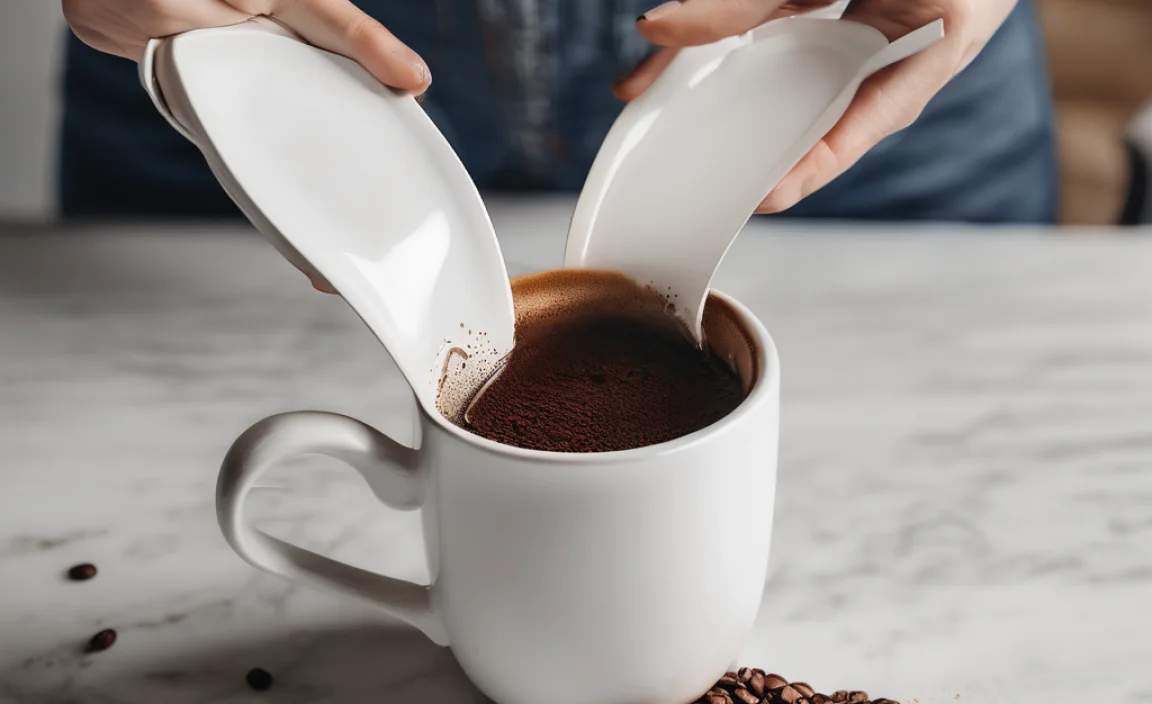

Sometimes, coffee stains on white jeans can be particularly persistent. If the initial steps haven’t completely removed the stain, try these methods:
Using White Vinegar
White vinegar is a natural bleaching agent and deodorizer that can be very effective on coffee stains.
- Mix one part white vinegar with two parts cold water.
- Soak the stained area in this solution for about 30 minutes.
- Gently blot the area or use a soft brush.
- Rinse thoroughly with cold water.
- If the stain is still present, you can try applying liquid detergent or stain remover again before re-washing.
Oxygen Bleach (Color-Safe Bleach)
For white jeans, oxygen bleach (like OxiClean) is a safer alternative to chlorine bleach, which can weaken denim fibers and cause yellowing. Always check the garment’s care label and the oxygen bleach product instructions.
- Dissolve oxygen bleach powder in warm water according to product directions.
- Submerge the stained portion of the jeans in the solution and let it soak for at least an hour, or even overnight for tough stains.
- Check the stain periodically.
- Rinse thoroughly.
- Wash the jeans as usual.
Dealing with Dried-In Stains
If the coffee stain has dried and set in, it will require more patience.
- Start by scraping off any surface residue.
- Soak the jeans in cold water for an hour to rehydrate the stain.
- Apply a commercial stain remover or make a potent baking soda paste. Let it sit for several hours or overnight.
- Gently scrub with an old toothbrush.
- Wash in the machine. You may need to repeat this process multiple times for very old or stubborn stains.
What NOT to Do When Removing Coffee Stains

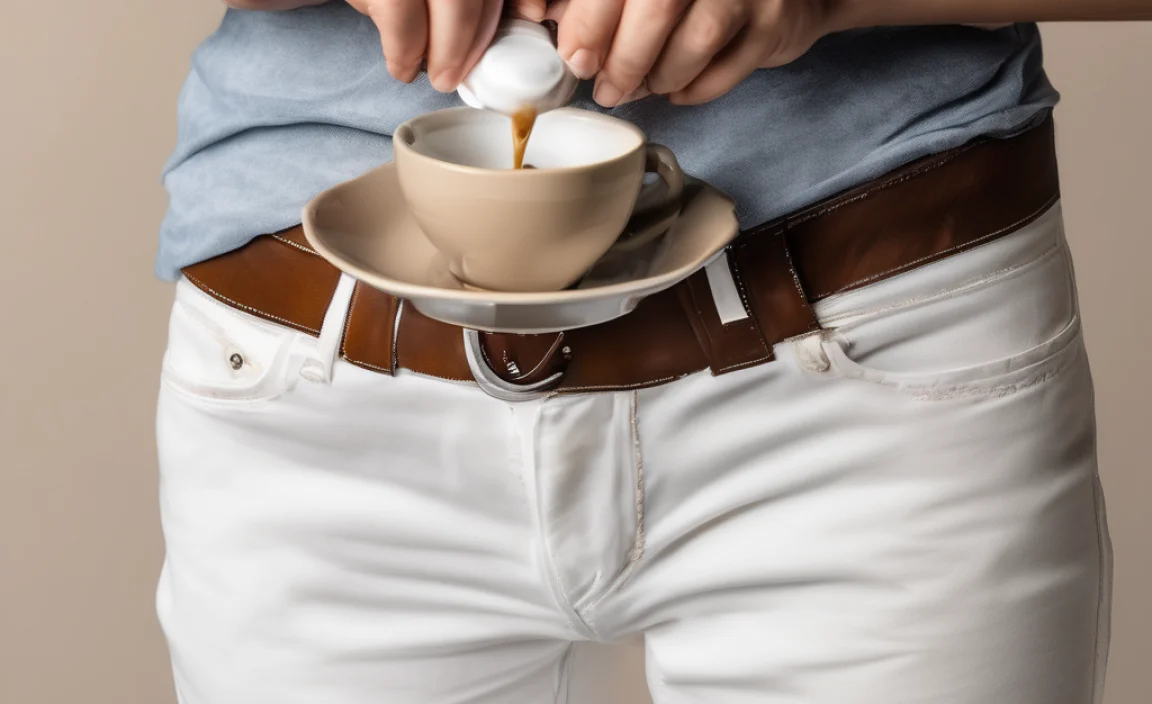
Avoiding certain actions can significantly improve your chances of stain removal and prevent damage to your jeans.
- Don’t use hot water: As mentioned, hot water can set coffee stains. Always opt for cold or cool water.
- Don’t rub aggressively: Vigorous rubbing can spread the stain and damage the denim fibers, creating faded or worn spots.
- Don’t put stained jeans in the dryer: Heat is the enemy of a fresh stain. Always ensure the stain is completely gone before drying.
- Don’t use chlorine bleach indiscriminately: While effective for whitening, chlorine bleach can yellow white denim and weaken its structure over time. Use it sparingly and only if other methods fail, diluted significantly.
Understanding Fabric Care Labels
Always consult the care label attached to your white jeans. This label provides vital information about the fabric composition and recommended washing and drying instructions. For denim, especially white denim, it will often indicate washing temperature, whether bleach is allowed (and what type), and drying methods. Ignoring these labels can lead to irreparable damage.
A typical care label might look something like this:
| Washing Instruction | Bleaching Instruction | Drying Instruction | Ironing Instruction |
|---|---|---|---|
| Machine wash cold, gentle cycle | Non-chlorine bleach only when needed | Tumble dry low or hang dry | Cool iron if needed |
You can find more general information about reading care labels from sources like the Federal Trade Commission (FTC), which regulates textile fiber content and care labeling in the U.S.: FTC Textile and Leather Promotional Items Guide.
Preventative Measures: Keeping White Jeans Stain-Free
While accidents happen, a few habits can help prevent coffee stains from becoming a recurring issue:
- Be Mindful: When enjoying your coffee, be extra careful, especially in your favorite white jeans.
- Use a Travel Mug: A well-sealed travel mug reduces the risk of spills.
- Change Before You Brew: If you’re prone to spills, consider changing into other clothes before making your morning coffee.
- Treat Stains Immediately: The faster you can address a spill, the easier it will be to remove.
Frequently Asked Questions About Coffee Stains on White Jeans
Q1: Can I use regular bleach on coffee stains on white jeans?
A1: It’s generally not recommended to use chlorine bleach on denim unless absolutely necessary and heavily diluted. Chlorine bleach can weaken the denim fibers and may even cause them to yellow over time. Opt for oxygen bleach or other stain removers first.
Q2: How long can I leave a coffee stain before trying to remove it?
A2: The sooner, the better! Ideally, you should treat a coffee stain within minutes of it happening. While fresh stains are easiest, even dried-in stains can often be removed with persistence.
Q3: My coffee stain is still visible after washing. What should I do?
A3: Do NOT put the jeans in the dryer. Repeat the pre-treatment steps. You might need to try a different pre-treatment method (e.g., if you used detergent, try baking soda paste or a commercial stain remover). Let the pre-treatment sit longer, then re-wash.
Q4: Can I use dish soap for coffee stains?
A4: Mild dish soap can be effective for some grease-based stains, but for coffee, liquid laundry detergent or a paste of baking soda often works better due to the nature of the tannins. If you try dish soap, rinse thoroughly.
Q5: Is it safe to use baking soda and vinegar together?
A5: While both are effective stain removers on their own, using them together in a strong concentration can neutralize their effectiveness and create a lot of fizzing that might not be ideal for delicate fabrics. It’s usually best to use them separately or in a diluted solution as a rinse.
Q6: What kind of stain remover is best for coffee?
A6: Enzyme-based stain removers are highly effective for organic stains like coffee, as they break down the protein and carbohydrate components of the stain. Look for products specifically labeled for organic stains.
Conclusion
Coffee spills on white jeans are a common, but thankfully, solvable problem. By understanding the nature of the stain and employing swift, gentle, and appropriate cleaning methods, you can effectively rescue your favorite pair of white denim.
Remembering to blot instead of rub, use cold water for rinsing and washing, and always check for stain removal before hitting the dryer are the golden rules. With a little patience and the right approach, your white jeans will be looking crisp and clean, ready for any occasion. Don’t let a coffee mishap ruin your style – follow these steps, and enjoy your bright white jeans for seasons to come!




